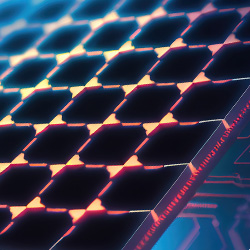Hybrid and Heterogeneous Integration in Photonics: From Physics to Device Applications
 The rapid advancement in photonic devices laid bare that no single photonic material technology can address the needs of all applications that desire a compact photonic solution. Integrating different material technologies into a single photonic device presents a tantalising solution as each material can be used to provide the photonic functionality for which it is best suited without compromising the functionalities of the other elements in the system. The clear advantages that such hybrid photonic material systems have motivated the exploration of a wide range of hybrid and heterogeneous photonic integration technologies, creating a rich library of materials and integration technologies that can be used to create advanced photonic devices. This APL Special Topic aims to provide a snapshot on the latest developments in hybrid and heterogeneous integration in photonic devices, from physics to device applications.
The rapid advancement in photonic devices laid bare that no single photonic material technology can address the needs of all applications that desire a compact photonic solution. Integrating different material technologies into a single photonic device presents a tantalising solution as each material can be used to provide the photonic functionality for which it is best suited without compromising the functionalities of the other elements in the system. The clear advantages that such hybrid photonic material systems have motivated the exploration of a wide range of hybrid and heterogeneous photonic integration technologies, creating a rich library of materials and integration technologies that can be used to create advanced photonic devices. This APL Special Topic aims to provide a snapshot on the latest developments in hybrid and heterogeneous integration in photonic devices, from physics to device applications.
Topics covered include, but are not limited to:
- Advancements in material technologies: phase change materials, 2D materials, III-V materials, II-V materials, perovskites, functional oxides, wide bandgap materials, polymers, chalcogenide glasses, ferroelectric materials (e.g. lithium niobate, lithium tantalate).
- Novelty in integration methods leading to improved physical properties: Flip-chip integration, transfer printing, die and wafer bonding, layer deposition, direct growth.
- Innovation in photonic interfacing methods: grating couplers, butt couplers, adiabatic tapers, 2 photon polymerisation systems
- Improved performance of integrated devices: integrated active components (light sources, amplifiers, detectors), high speed modulators, nonlinear optical devices, tunable metamaterials, integrated optical frequency comb sources, integrated quantum sources (quantum dots, SPDC waveguides, quantum wavelength convertors).
- Advancements in photonic device applications: LIDAR, high speed communications, neuromorphic systems, quantum information processing, quantum networks, portable atomic systems (clocks, magnetometers, gyroscopes), inertial navigation systems, sensing devices
Guest Editors
Andy Boes, University of Adelaide
Michael Strain, University of Strathclyde
Lin Chang, Peking University
Nima Nader, National Institute of Standards and Technology
APL Editors
Satoshi Iwamoto, University of Tokyo
